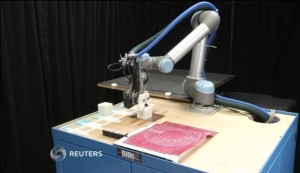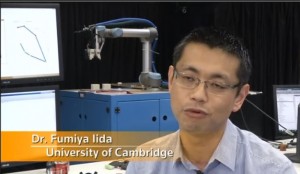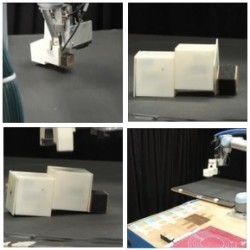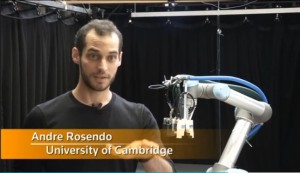
Scientists from the University of Cambridge build a robotic ‘mother’ that designs and builds its own ‘children’, assessing them to improve the performance of the next generation.
(Reuters) Sept. 4 – This robot is bringing a new sense to the term Mother Nature.
Built by the University of Cambridge’s Department of Engineering, this robot ‘mother’ was given a simple command to build ‘children’ capable of locomotion.
Assembled from up to five plastic cubes with small internal motors, each robotic offspring is then placed on a surface where its performance is tested.
By analyzing the data it collects, the mother robot ensures preferential traits are carried through to the next child she designs.

Dr. Fumiya Iida, a University Lecturer in Mechatronics from the University of Cambridge
According to Dr. Fumiya Iida, a university lecturer in mechatronics from the University of Cambridge , the mother robot can actually build hundreds of child robots and see the performance of these child robots. If their performance is good, keep their design for the next generation. And if bad, just let it go. And just repeating this iterative design improvement processes, the mother robot can actually gradually improve the performance of the child robot.
Recent experiments showed how the mother robot improved the performance of her children over ten generations.

Fine-tuning of the design parameters led to versions that human designers might not have come up with.
“The largest experiment that we did so far, we built 500 robots; the mother robot generated 500 robots to see what one is good and which one is bad. And after all, we found quite an interesting design, the design of he child robots, that is very difficult for humans to design.”, Dr. Fumiya Iida said.
The team believes it could one day have positive applications for industry– such as making cars.

Andre Rosendo , a Research Associate at the Department of Engineering from the University of Cambridge
Andre Rosendo , a research associate at the Department of Engineering from the University of Cambridge states that if you could have robot cameras evaluating how each car is being created, and from the mistakes that you had in the operation you could just re-do for the next car and for the next car, and you keep re-doing it – at the end you’re going to have amazing cars.
The scientists’ current automaton takes about ten minute to design, build and test its babies.
Their next step is to use computer simulation to pre-select the best robot designs, and use real models for actual testing.
As Charles Darwin might have said, it’s robotic survival of the fittest.







